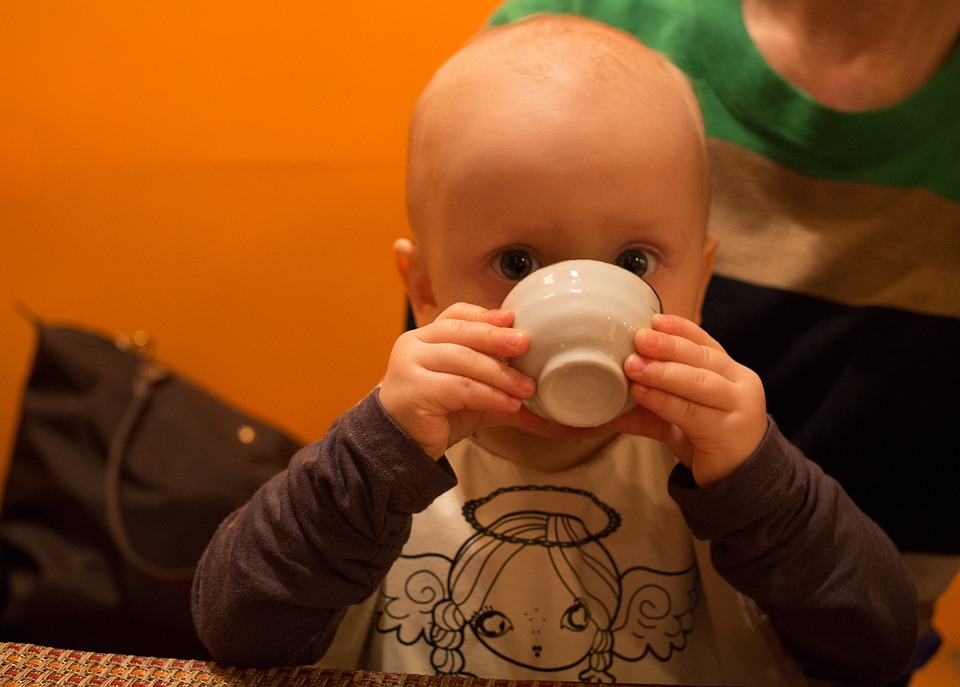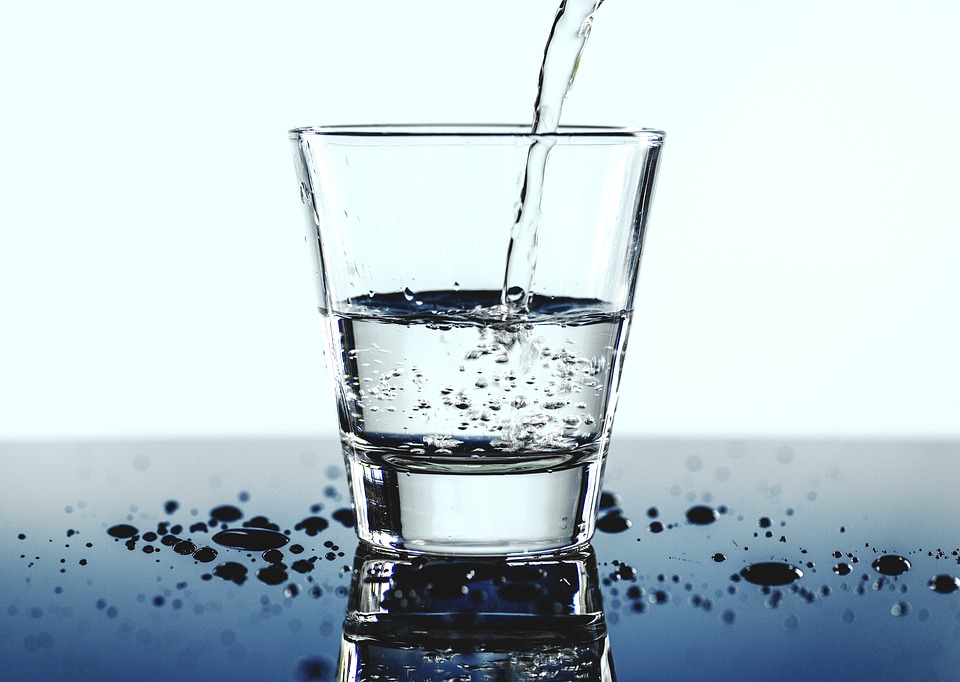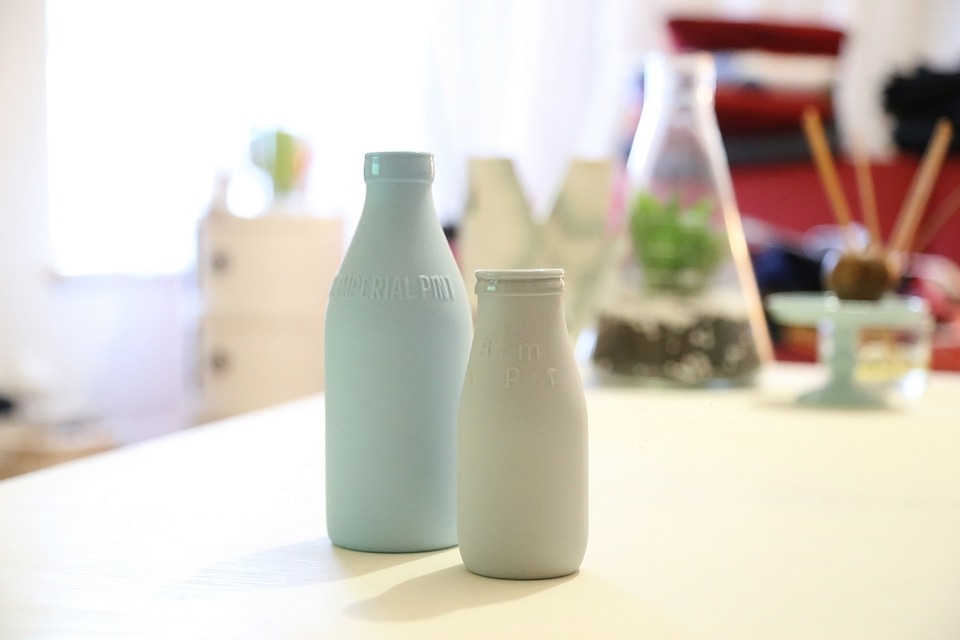New moms out there always ask how they can start teaching babies how to drink from a cup. A lot of new parents start out their babies on drinking from sipping cups once they start drinking water. You can use a small open glass cup once you’ve already trained your baby with sipping cups. Or you can also skip the sipping cup altogether and just begin with the small open glass cup. We also highly recommend that you use a tempered glass because even if it falls off from the ground that’s not from a super high distance, it usually bounces up from the fall and it doesn’t break. In this article, you’ll learn about teaching babies how to drink.
Not as Hard!
Teaching babies how to drink from an open cup is actually not as hard as what most parents think. Your basic approach should be a hand over hand guidance for every single step. This means you have to hold the glass from the moment your baby tries to lift it or picking it up, to setting it down. You have to do this until your baby has mastered the sort of ‘art of drinking’ or the steps you taught them and do it on their own. Keep in mind that just like anything else, it takes a lot of time and patience before your baby can lift the glass on his/ her own without dropping it or spilling the content over.
Progression
If your baby is just around 6 months old, you might notice that your baby’s movements could be somewhat spastic or like he/ she will grab the cup with a really hard grip just like how they do it with most things. Eventually though those things or movements will subside, as your baby gets a little bit older, and his/ her movements were a little bit more refined, your baby will eventually learn what’s it like to drink from a cup. This is because your baby will learn that through her muscle memory, and your baby will eventually start doing it on his/ her own. But keep in mind that it is a progression.
How to Drink from a Cup
Step #1:

The first thing you need to do is to fill the cup or glass with just a little bit of water – preferably around ½ inch of water which is just enough for a few sips. Obviously, you don’t want them to be sputtering or choking on everything you have to offer them. Expect a little bit of sputtering because that’s normal.
Step #2:

Set the cup or glass in front of your baby and once your kid grabs it, make sure to not let go of the cup and guide your baby as he/ she drinks from it. Make sure to help your baby lift the cup to his/ her lips. You’ll see that the drinking motion is something that’s new for the baby, which is why you don’t want to pour the whole cup into their mouth at once.
Step #3:
Bring the water level up to their lips enough that your baby can feel it coming into his/ her mouth and start taking some sips. Once your kid sips the water, you can help them set it back down.
Step #4:

The next thing you can do after the first try is done is to refill the water and do the same thing again for your baby. On the second try, you can expect your kid to already have some idea of the drinking motion or that the cup needs to come to her lips and do a lift of the glass so she can be able to sip the water. This is a natural learning process for them as long as your consistent on what you’re doing or the steps you are taking.
Step #5:

One tip you can do as you help your baby drink is to let him/ her swallow on his own pace. Guide the glass while they’re holding it if you feel like they need to take a break and just tip it back for more. Another thing is that every single time that your baby is drinking or lifting the cup, make sure to pair it with a phrase like “two hands please.” Make sure to do it every single time. It’s the same when they set it back down, you can say “gently” or “done drinking” or something like that. What’s important is that you say the phrase every time you do the drinking motion so that the baby can also remember it.
Pairing Phrases
The importance of pairing a phrase as your baby lifts up the glass and set it down is that as your baby becomes more verbal, your baby will understand what you are saying. So if you are constantly reminding them every single time and they’re hearing the phrase as they are doing the drinking motion, they eventually internalize it and learn from it. It’s also important to model it if you want your baby to pick up this lesson properly. Whenever you’re setting the glass down, you should also say the phrase and the motion of setting the glass gently so that they won’t slam the cup down to the table or break the glass.
A Feeling Process
You can also expect that your baby throws the glass or cup the first time but then that’s the reason why you need to hold and guide them as they lift it up. You have to hold and guide them until it comes to a point that you can see that they are ready to lift it on their own. It’s a bit of trial and error process so you have to be really patient because it’s part of them learning. So this involves sort of a feeling process because you have to also give them the freedom to let them do it on their own at some point. You have to use your judgment as a parent especially if you feel like they are really ready to do it by themselves. If the glass or cup fly then that’s the importance having a tempered glass because it’s usually sturdy.
Sputtering and Swallowing
When it comes to the progression of how much water you can give to your baby, it depends on their age. If your baby is less than 6 months or around that age, obviously you want to start off with just a few sips to avoid choking because that’s not a positive experience for your baby. They will also learn that a little bit of sputtering is okay, and they’ll learn that as they swallow that it’s harmless.
Eventually you’ll notice that you are seeing your baby very accurately take sips and also swallow all the water in the cup. Your baby will also get to a point that they would want more so that’s your cue that they can handle more. When you feel like your baby is ready for the next step, then he/ she probably is. So it all boils down to your judgement as a parent. We hope you learned about teaching babies how to drink in this article.Keep reading our blog post for more tutorials like this!


 I love to write books about family, dating, household, and healthy living. My books are written for everyone in an easy to read and understandable style.
I love to write books about family, dating, household, and healthy living. My books are written for everyone in an easy to read and understandable style.